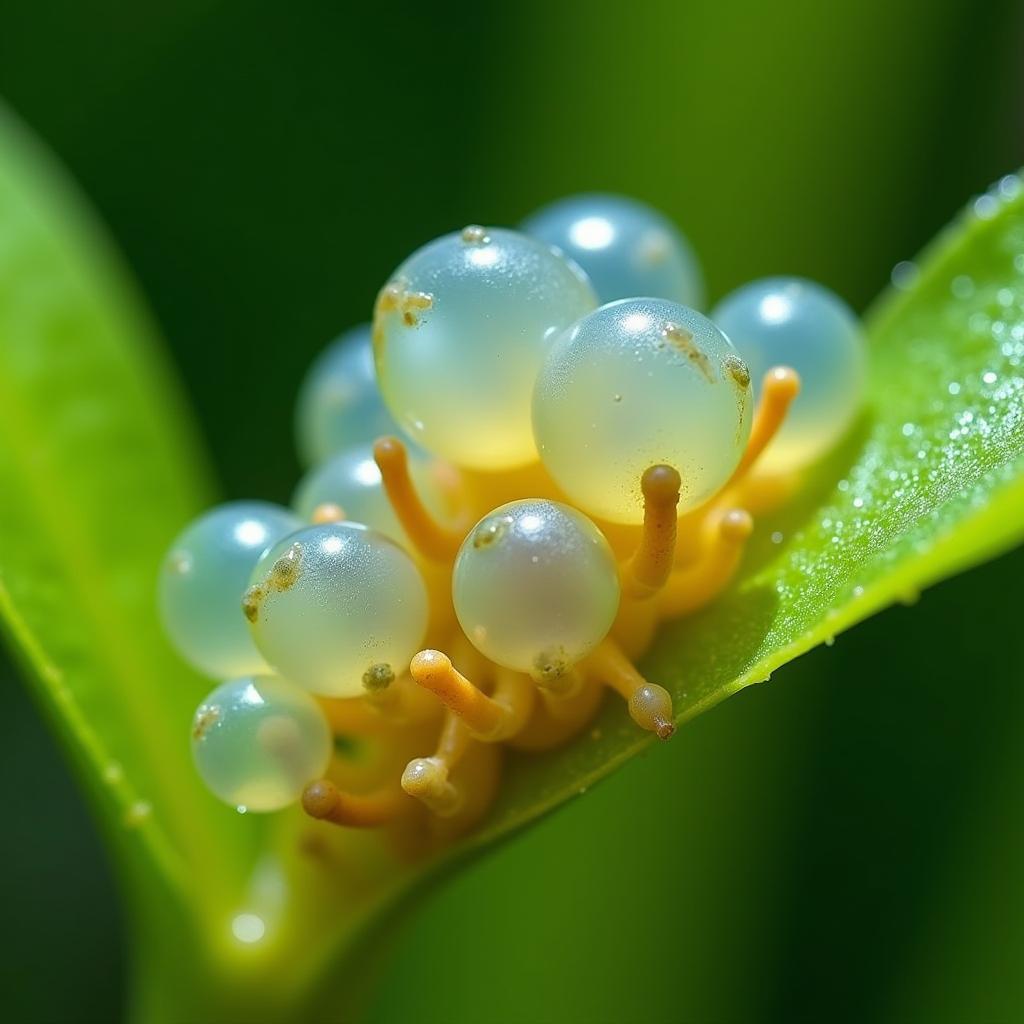African Clawed Frog Eggs Care: A Complete Guide
Taking care of African clawed frog eggs is a rewarding experience for any amphibian enthusiast. These fascinating creatures require specific care to ensure their eggs hatch successfully and develop into healthy tadpoles. This comprehensive guide will provide you with all the information you need to care for your African clawed frog eggs, from the moment they are laid to when your tadpoles emerge.
Understanding the African Clawed Frog Lifecycle
Before delving into egg care, it’s essential to understand the African clawed frog’s lifecycle. These frogs undergo a metamorphosis from egg to tadpole to adult frog. Female African clawed frogs typically lay hundreds of eggs, usually at night, attaching them to plants or other surfaces in the water.
 African Clawed Frog Eggs Attached to a Plant
African Clawed Frog Eggs Attached to a Plant
Creating the Ideal Environment for African Clawed Frog Eggs
The key to successful African clawed frog egg care is replicating their natural habitat as closely as possible. This involves maintaining appropriate water parameters, providing proper nutrition, and ensuring a stress-free environment.
Water Parameters for Healthy Eggs
Maintaining pristine water conditions is crucial for the development of African clawed frog eggs. Use a dechlorinated water conditioner to remove harmful chlorine and chloramines from tap water.
- Temperature: Aim for a water temperature between 70-75°F (21-24°C).
- pH: Maintain a slightly acidic to neutral pH of 6.5-7.5.
- Ammonia, Nitrite, and Nitrate: These should always be kept at 0 ppm. Regular water changes are vital to prevent the buildup of harmful toxins.
Essential Equipment for Egg Care
- Separate Tank: Transfer the eggs to a separate, smaller tank (5-10 gallons is sufficient) to prevent accidental ingestion by adult frogs or other tank mates.
- Gentle Filtration: Use a sponge filter or a filter with a low flow rate to avoid disturbing the delicate eggs.
- Aquarium Heater: A reliable aquarium heater will help maintain a stable water temperature.
Recognizing and Removing Unfertilized Eggs
Not all African clawed frog eggs will be fertilized. Unfertilized eggs typically appear white or opaque, while fertilized eggs have a darker, more translucent appearance.
 Identifying Fertilized and Unfertilized Eggs
Identifying Fertilized and Unfertilized Eggs
“Unfertilized eggs can decompose and affect water quality, potentially harming the developing embryos,” explains Dr. Emily Carter, an aquatic veterinarian. “Removing them promptly helps maintain a healthy environment for the fertilized eggs.”
Use a turkey baster or a small siphon to gently remove any unfertilized eggs from the tank. It’s best to do this daily to maintain optimal water quality.
Hatching Time: From Eggs to Tadpoles
Under optimal conditions, African clawed frog eggs will hatch within 3-5 days. Once hatched, the tadpoles will be tiny and resemble small, black commas clinging to the sides of the tank or plants.
Feeding Your Growing Tadpoles
For the first few days after hatching, the tadpoles will survive off their yolk sacs. Once these are absorbed, you’ll need to provide them with a suitable diet.
- First Foods: Start with infusoria, a microscopic life form found in aged aquarium water. You can also offer finely crushed flake food or specialized tadpole food.
- Feeding Frequency: Feed your tadpoles small amounts several times a day.
 African Clawed Frog Tadpoles Feeding
African Clawed Frog Tadpoles Feeding
African Clawed Frog Eggs Care: A Rewarding Journey
Caring for African clawed frog eggs is an engaging and educational experience. By following these guidelines, you can ensure the successful hatching of your frog eggs and witness the fascinating transformation from egg to tadpole to adult frog.

